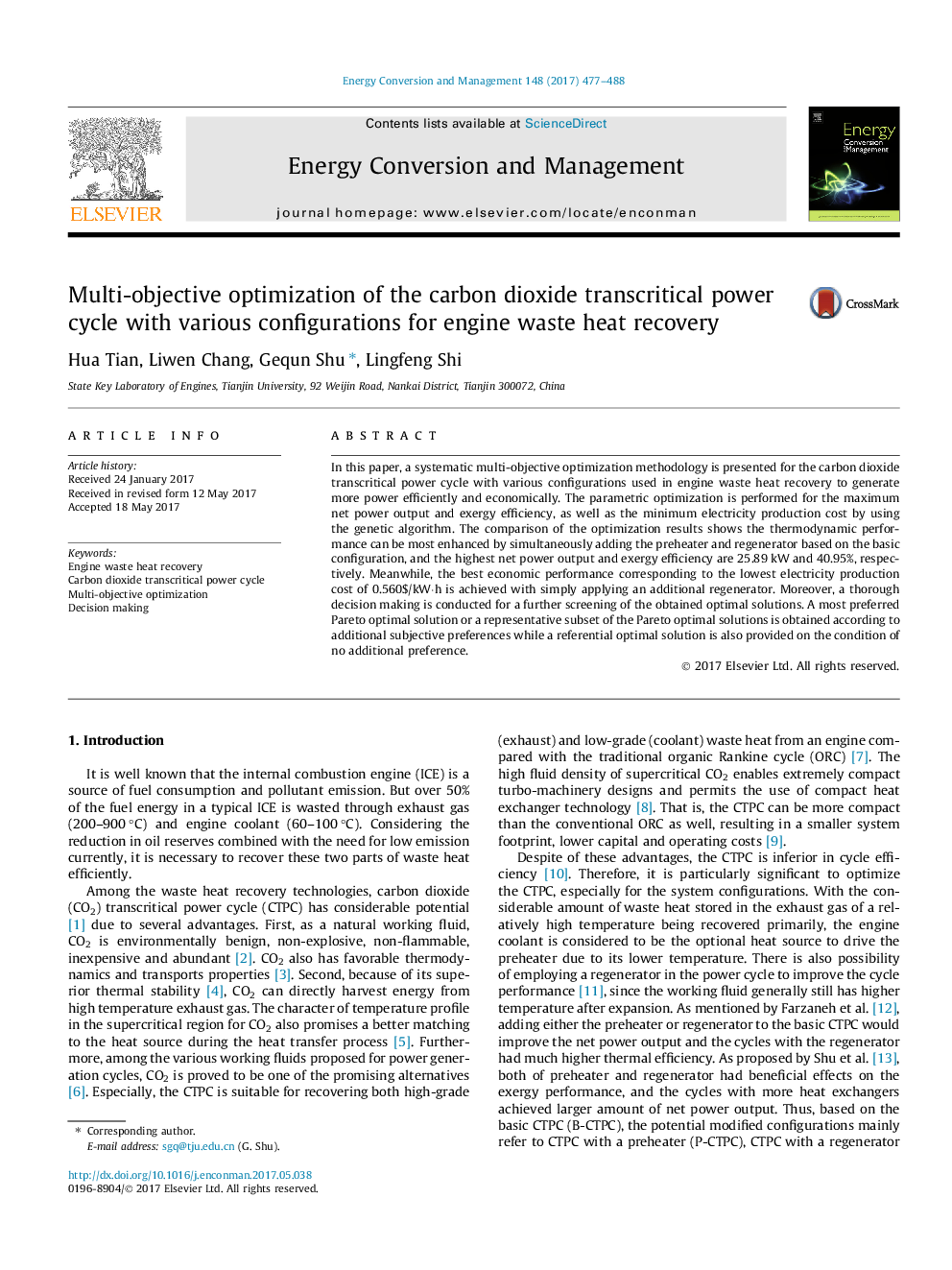| Article ID | Journal | Published Year | Pages | File Type |
|---|---|---|---|---|
| 5012533 | Energy Conversion and Management | 2017 | 12 Pages |
Abstract
In this paper, a systematic multi-objective optimization methodology is presented for the carbon dioxide transcritical power cycle with various configurations used in engine waste heat recovery to generate more power efficiently and economically. The parametric optimization is performed for the maximum net power output and exergy efficiency, as well as the minimum electricity production cost by using the genetic algorithm. The comparison of the optimization results shows the thermodynamic performance can be most enhanced by simultaneously adding the preheater and regenerator based on the basic configuration, and the highest net power output and exergy efficiency are 25.89 kW and 40.95%, respectively. Meanwhile, the best economic performance corresponding to the lowest electricity production cost of 0.560$/kW·h is achieved with simply applying an additional regenerator. Moreover, a thorough decision making is conducted for a further screening of the obtained optimal solutions. A most preferred Pareto optimal solution or a representative subset of the Pareto optimal solutions is obtained according to additional subjective preferences while a referential optimal solution is also provided on the condition of no additional preference.
Related Topics
Physical Sciences and Engineering
Energy
Energy (General)
Authors
Hua Tian, Liwen Chang, Gequn Shu, Lingfeng Shi,
